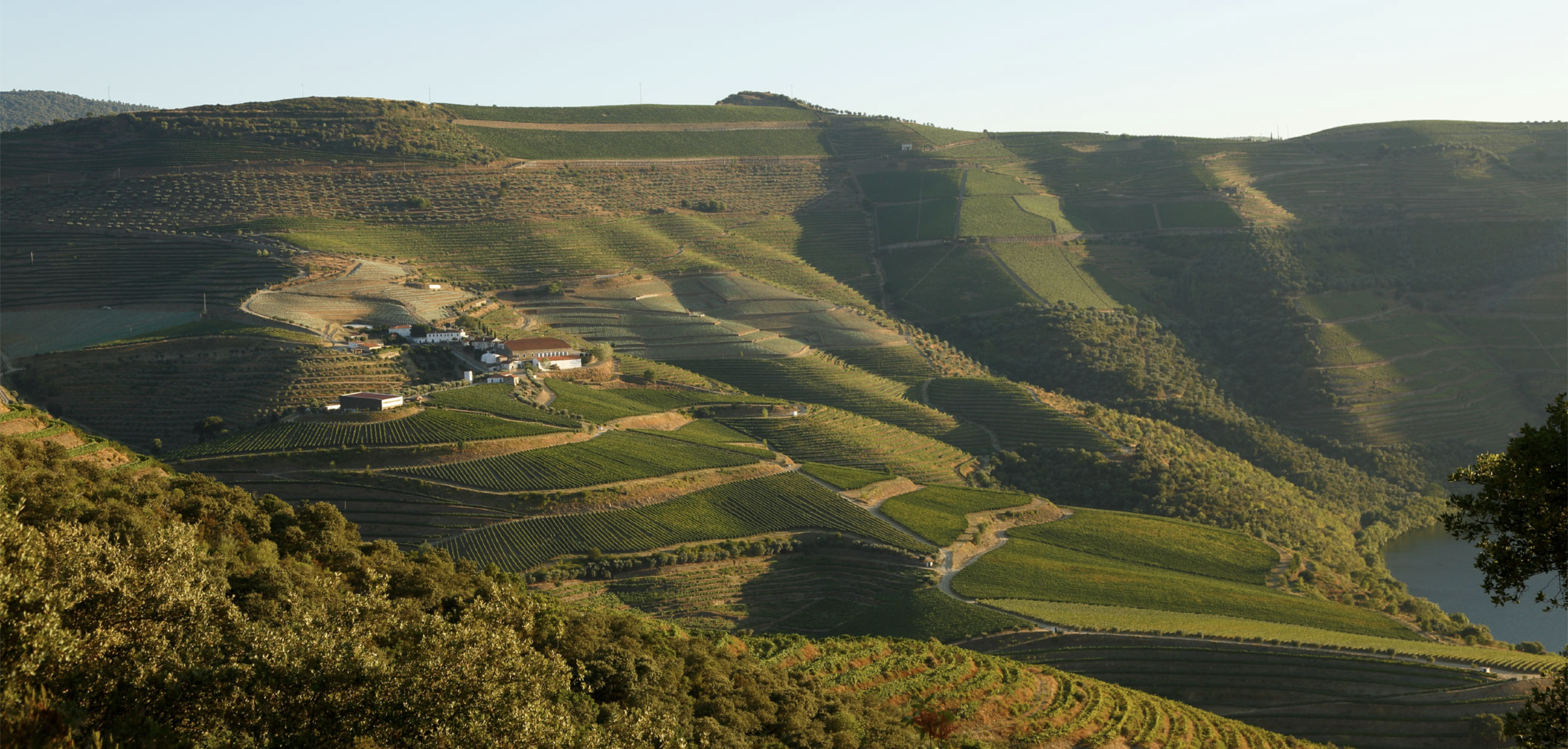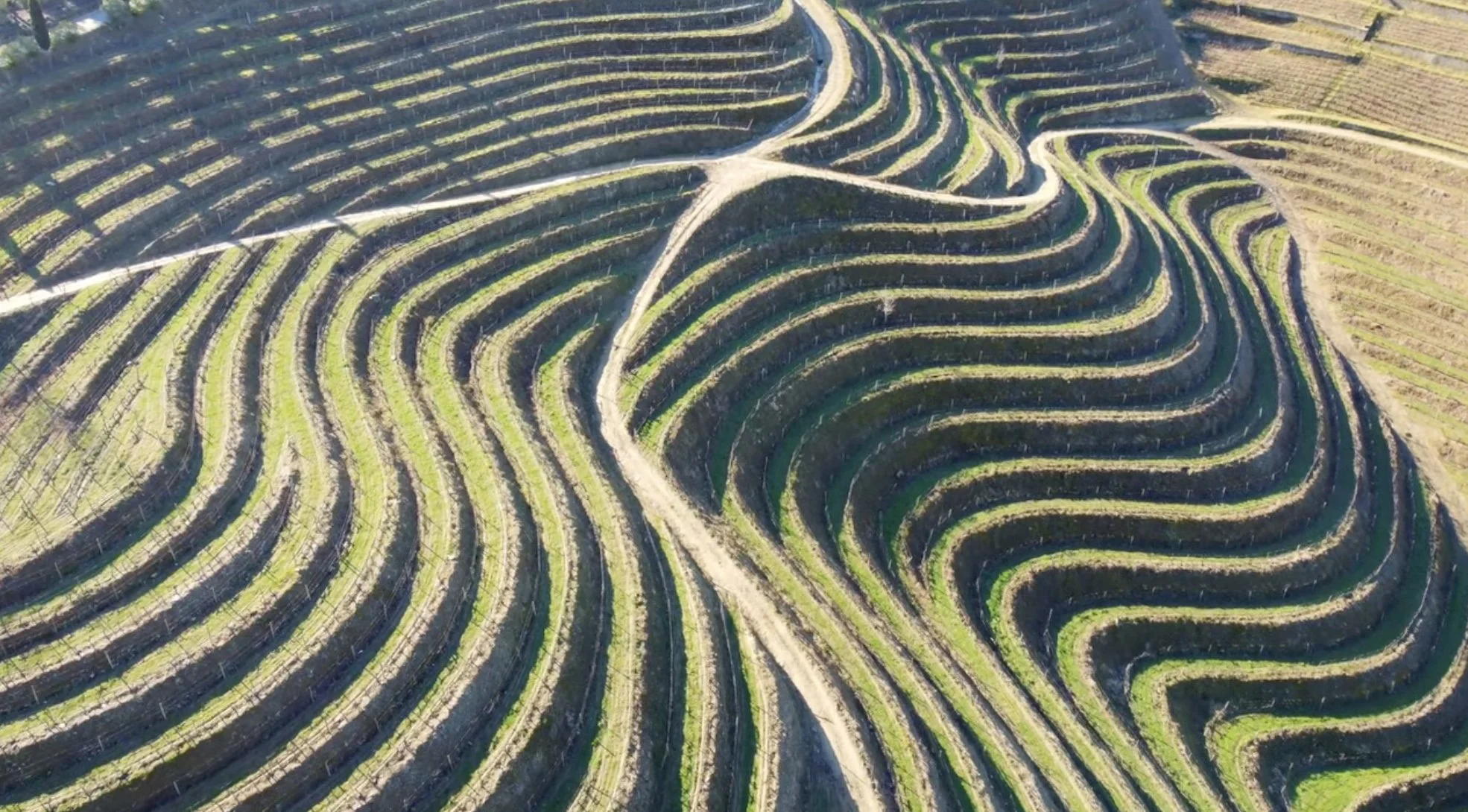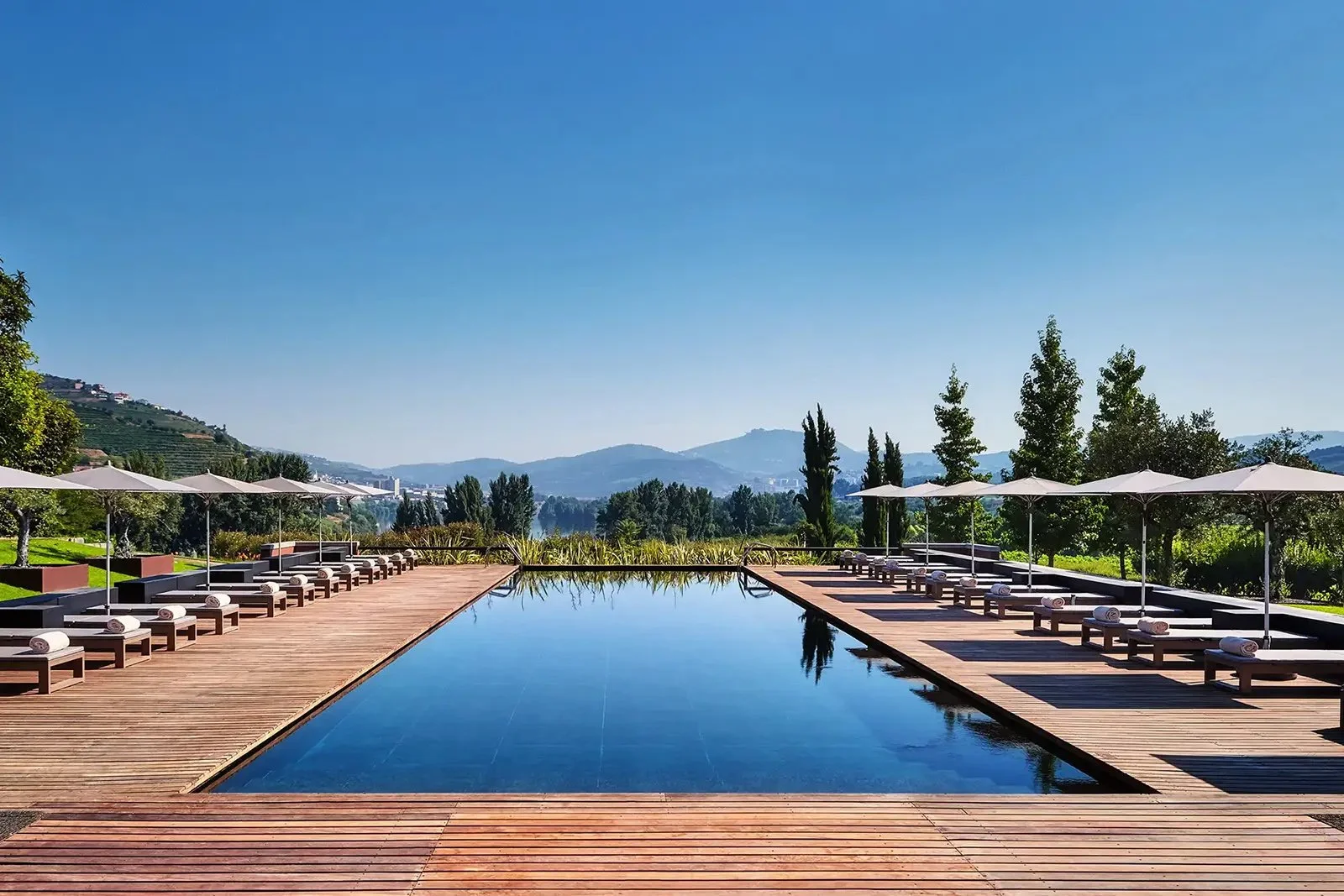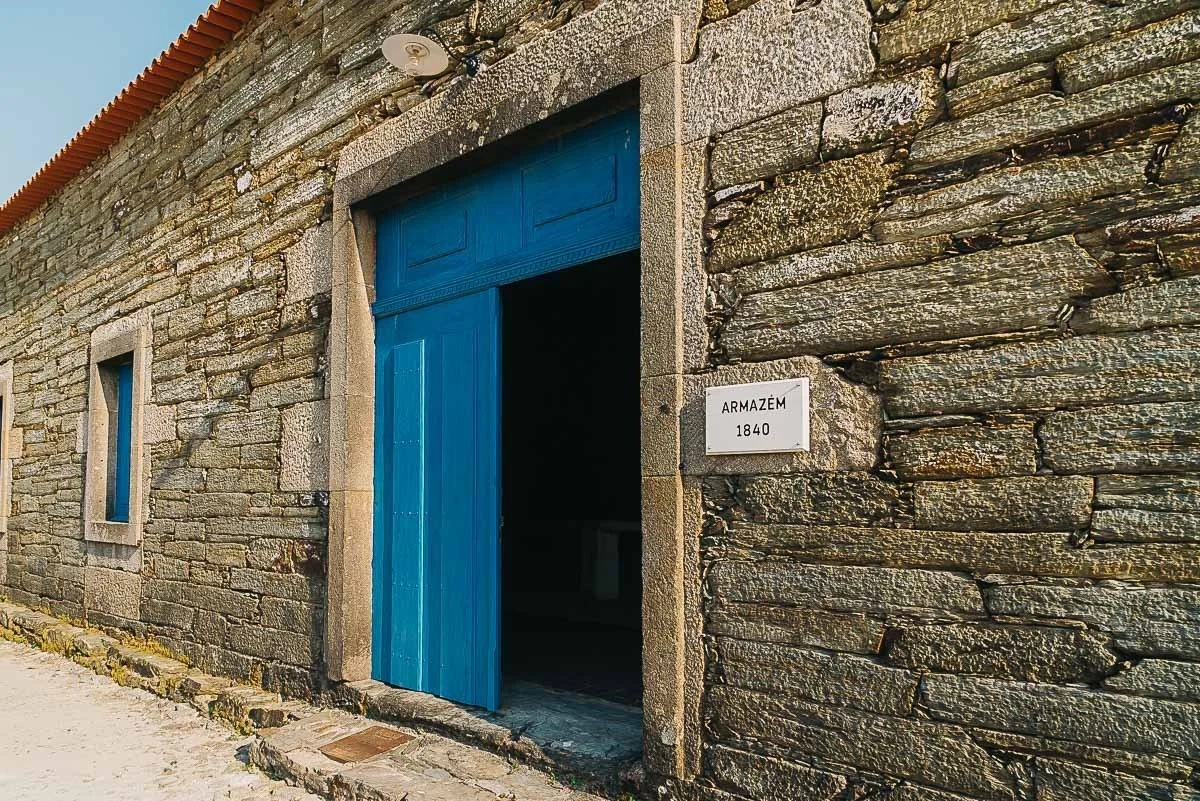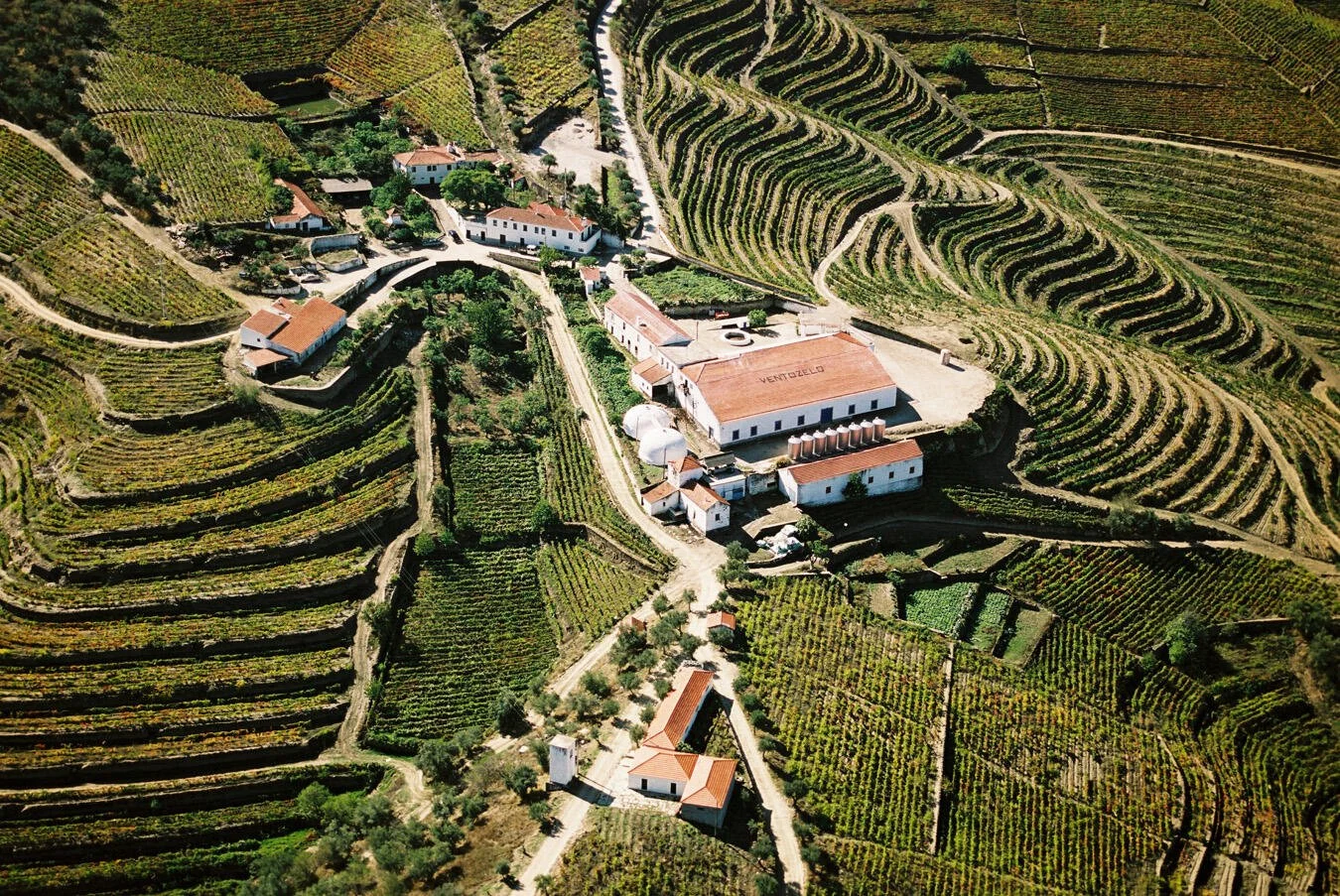Portugal > Douro > Quinta de Ventozelo
the douro
Snaking inland from the Atlantic at the city of Porto, the Douro River is one of Europes most scenic and wild river valleys. The Alto (upper) Douro, stretching from just west of Vila Real on the Corgo (a tributary of the Douro) to the Spanish border, is a steep vale protected by the river’s winding course through steep gorges from any significant Atlantic influence. The Alto Douro is a UNESCO World Heritage Site, famed for its wild scenery punctuated by ancient, terraced vineyards.
The Douro DOC within Portugal
DOC Zones
The Douro DOC is divided into three sub-regions, the Baixo Corgo, the Cima Corgo, and the Douro Superior.
Baixo Corgo ("below the Rio Corgo" left on the map), a subregion with the mildest climate and most precipitation. It has 35,000 acres under vine. Although it is the subregion that was planted first, in general, it is considered to give wines of lesser quality than the other two subregions.
Cima Corgo ("above the Rio Corgo,” center on the map) is the largest subregion with 47,000 acres of vineyards, centered on the village of Pinhão, and where the majority of the famous Quintas are located.
Douro Superior ("upper Douro,” right) is the hottest and driest of the subregions, and stretches all the way to the Spanish border. It has around 21,000 acres of vines and produces many wines of very good quality. As it is the least accessible of the three subregions, it is the most recently planted, and it is still expanding.
Originally planted to vines towards the end of Roman Imperial control in the 3rd-4th Centuries, vineyards were dramatically expanded by the Church as it established monasteries and abbeys throughout the region.
The earliest mention of “Port Wine” dates to 1675, but with the signing of the Treaty of Methuen in 1703 (and because British traders were blocked from the Bordeaux trade at the time, British “Port Lodges” were established at Porto to facilitate the shipment of the regions wines to Britain. Both table wines and fortified wines were in high demand, the latter largely to provide a stable source of scurvy-preventative Vitamin C on board Navy and merchant ships.
In 1756, Sebastião José de Carvalho e Melo, 1st Marquis of Pombal and dictatorial Chief Minister of State to King Joseph I, established the Douro Wine Company and defined the Douro/Port wine district, making it one of the worlds first demarcated wine production areas.
quinta de ventozelo
Quinta de Ventozelo is located in São João da Pesqueira, between Pinhão and Ervedosa do Douro in the Cima Corgo subregion, and extends over nearly 1000 acres, 500 of which are planted with vines, 50 with olive groves and the rest with scrubland. Centered in a sweeping amphitheater of vines, the estate is one of the oldest and most prominent properties in the region. The vineyards are on steep terraced hillsides, sculpted to follow the contours of the land.
Founded around 1288 as a Cistercian monsatery, the estate passed around 1500 into the hands of the hidalgos of Casa do Poço from Lamego. Since then the Quinta has passed through many hands, but always maintained its position as a permier wine Quinta and as a center of hospitality on the rough routes through the Douro.
In 2014, Quinta de Ventozelo was acquired by Gran Cruz, the largest port wine exporter in Portugal, which had already been working with the estate since 2011 to moderize its vineyards and winemaking. Gran Cruz’ massive investments can be seen in the quality of both its winemaking and its prominence as an eco-tourism venue, with a 29-room boutique hotel surrounded by breathtaking scenery that is not to be missed. Here’s a nice review from Conde Nast Traveller.
The pool at Quinta de Ventozelo
the wines
The estate produces a large range of wines including a line of Port. We offer their line of classic blends, named Azul de Ventozelo in reference to the iconic blue doors of their 19th-century stone warehouse.
Azul de Ventozelo Branco: a blend of Viosinho, Malvasia Fina and Cуdega. Vinified in stainless. Fresh citrus notes, hints of orange blossom. Crisp and refreshing, a great apertif or seafood wine.
Azul de Ventozelo Rosado: a blend of Tinta Amarela and Tinta Roriz. Fermentation in stainless. Bright and floral with strawberry notes. A great apertif, pair with light seafood, marinated octopus salad…
Azul de Ventozelo Tinto: a blend of Touriga Franca, Touriga Nacional, Tinta Roriz. Vineyard and winery berry selection, low-temp maceration, fermentation in stainless. Floral/red fruit nose, plummy mid-palate, fruity low-tannin finish. Juicy.
Climate and Terroir
The upper Douro has a continental climate of hot dry summers and cold windswept winters. The main stem of the Douro and its tributaries lie in deep ravines, which over the centuries have been terraced to retain a bit of soil and to provide a level workspace for planting and working vines.
Soils are largely schist with some granites. Vineyards for fortified wines tend to be sited on the schist-based soils, with table wines produced more often from the granitic zones. Both are mineral rich, rocky and well drained, producing low-yield harvests of concentrated, deeply-structured fruit.
Quinta de Ventozelo: Aerial View
douro grape varieties
The Douro DOC allows some 100 grape varieties, many of which have grown there for centuries. Many of the older vineyards are field blends, so that many quintas have their own unique and proprietary blended wines.
Yields are very low, with a DOC maximum allowed production of 32 hectoliters per hectare, and an average of a mere 18hL/Ha (1620 bottles per acre).
The primary grape varieties used in the Douro today are
Touriga Nacional: These grapes account for a small amount of the region’s total vine stock, but it is growing rapidly. The grape had virtually become extinct by the 1970’s but was brought back by producers who worked vigorously on improving the variety through clonal selection. It is a difficult grape to manage but it can produce the darkest and most concentrated wines: deep, dense and with cast-iron backbone. Touriga Nacional is today recognized as the finest red variety in the Douro.
Tinta Barroca: This grape is planted at higher altitudes in the Douro Valley or on cooler north-facing slopes in the Cima Corgo. It is the first to ripen but is susceptible to extreme heat. This grape produces supple, well-structured wines, which frequently have a distinctive rustic, earthy character.
Tinto Cão: This grape is even more challenging to grow than Touriga Nacional, with small bunches and small yields. It ripens late but needs to be picked at the right time to achieve the delicate balance of alcohol and acidity. This grape has the capacity to produce long-lasting, complex wines.
Tinta Roriz: Known as Tempranillo in Spain. It produces wines that combine tight, firm fruit with finesse and length. A workhorse grape that makes up a significant portion of many Douro blends.
Touriga Franca: This is the most widely planted variety in the Douro. It flourishes on warmer south-facing slopes and gives consistent yields. This grape brings structure, up-front fruit, elegance and floral overtones. The young reds for immediate drinking have cherry and raspberry aromas, and the cellar reds start with notes of black fruit and chocolate, but age to great delicacy and complexity for 20 years or more.
Malvasia: This (white)variety is the second most widely planted grape in the Douro Valley. It is difficult to cultivate but the results can be impressive. Elegant wines with hints of nutmeg and some smoke, typically lacking the pungency of Spanish or Italian Malvasia.
Rabigato: Portuguese for ‘cat’s tail’, this wine matures slowly and is able to stand up to extreme heat. Its aroma is of medium intensity and sweet, reminiscent of orange flowers with some herbal notes, nice balance and fresh, with a fruity taste. In the mouth, it has bright crispness and good length It offers white Port and white Douro table wines freshness and high levels of acidity.
Viosinho: This is a low-yield variety and produces some very high quality wines. Good intensity, reminding chamomile and greengage plum, fruity and complex. Medium acidity with gentle finish.
Touriga Nacional

